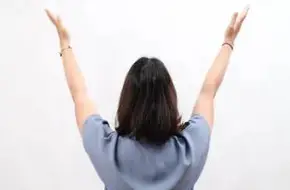-
Nanjing isn’t just a city steeped in history—it’s also a paradise for food lovers. The local cuisine, shaped by Jiangsu’s agricultural abundance and centuries of culinary tradition, offers a feast of unique flavors. From street snacks to refined dishes, here’s how to dive into Nanjing’s food scene like a pro.
What are Nanjing’s must-try dishes?
The city’s signature dishes often center around one key ingredient: duck. Nanjing is famous for yǎn shuǐ yā (salty duck), a cold dish with tender meat and a subtle, umami-rich brine. For something warm, yā xuè fànsī tāng (duck blood vermicelli soup) combines silky noodles, fresh duck blood cubes, and savory broth. Another street-food star? Lǐxiǎolóngbāo (Nanjing-style soup dumplings), bite-sized parcels filled with pork and broth, best devoured before the juice spills! Don’t miss gūōtiē (pan-fried potstickers) either—crispy on the bottom, soft on top, often stuffed with pork and chives.
Where should I go to experience Nanjing’s food culture?
For an immersive eatery, head to Línfǔ Xījiē (Confucius Temple’s Qinhuai Snack Street). Here, stalls buzz with vendors selling shíjǐn dòufulào (tofu pudding in syrup) and jìnlí yā (crispy roast duck). At night, the area transforms into a lively market where you can sample méihuā gāo (pluppy rice cakes topped with plump prunes) or spicy lóngxiā (crayfish) in summer. For a sit-down meal, Zhōnghua Mén (Chinese Gate) hosts restaurants serving classics like xīhóng shì yú (braised fish in tomato sauce) alongside local greens.
Why does duck play such a big role in Nanjing’s cuisine?
Duck isn’t just food here—it’s tradition. Nanjing’s wetlands made poultry farming natural, while the city’s ya salt (from the Qing dynasty) created the perfect curing method for yǎn shuǐ yā. Locals even joke that “no feast is complete without duck.” Try Jīnlí yuǎnwéi yā (Nanjing roasted duck) for crispy skin and juicy meat, often served with pancakes, hoisin sauce, and scallions.
Can I learn to make Nanjing dishes myself?
Absolutely! Many markets, like Yínchí Sì (Silver Lake Market), offer hands-on experiences. Join a local cooking class to master guìhuā táng yùmián (sweet taro balls with osmanthus syrup) or qīngming jiǎobǎo (vegetarian dumplings for Tomb-Sweeping Day). Markets also sell mòsī chǎn (sesame paste) and xiǎocài (pickled vegetables)—perfect for DIY snacks.
When is the best time to enjoy Nanjing’s food?
Timing matters! In autumn, gānzhe mǐfàn (rice cooked with seasonal crab) pairs perfectly with hairy crabs from Lǐsīqiào (Lishi Bridge). Winter brings hútu tuǐàng (goose leg soup) to warm chilly bones. Summer? Sink your teeth into láoměng xiǎolóngxiā (spicy crayfish) at riverside stalls. Year-round, however, you’ll find qīngming jīkuài (spring rolls) and rèláo zhènglí (glutinous rice porridge) to satisfy any craving.
To truly “eat like a Nanjing local,” wander beyond tourist traps. Chat with vendors at Héxīgài (Inner River Covered Bridge) or join a food tour led by guides who’ll introduce you to hidden gems. With its blend of history, flavor, and warmth, Nanjing’s cuisine is a journey worth savoring—one delicious bite at a time.
-
Beyond the obvious landmarks lies a city layered with hidden gems. As China’s only dynasty that ruled from both Nanjing and Beijing, the Ming legacy here feels especially alive. Walk through Zhonghua Gate and you’ll notice locals practicing calligraphy on square xipa street stones – this isn’t staged tourism, it’s everyday cultural immersion. The key to unlocking Nanjing’s soul lies in seeking experiences where history breathes through modern life.
What Ancient Wonders Hide in Nanjing’s Royal Tombs?
The UNESCO-listed Ming Xiaoling Mausoleum isn’t just a gravesite – it’s a portal to imperial grandeur. Wander stone statues of elephants and camels frozen mid-procession, then climb the 395-step staircase flanked by guardian lions. Savvy travelers know to visit during sunrise when morning mist transforms the sacred way into an ethereal corridor. Just 3km away, the lesser-known Zhu Yuanzhang’s Tomb (Ming founder) offers quieter contemplation among moss-covered ruins. Pro tip: Rent an audio guide to hear how Ming emperors were buried with entire fleets of ceramic ships – now that’s commitment to the afterlife!
Where Can You See Living Fossil of Chinese Craftsmanship?
At Humble Abode (Ganxiu Ge), artisans still weave 1,600-year-old Yunjin brocade using silk so fine it shimmers like liquid gold. Book a workshop to strum a guqin (ancient zither) carved from thousand-year-old cypress – each instrument holds the soul of fallen Ming dynasty trees. Down at Qin Huai River, seek out Mr. Wang’s Rainflower Stone Studio, where masters carve landscapes within translucent stones using techniques passed down 1,500 years. Their motto? “Every flaw becomes a mountain if you carve wisely.”
How Does Nanjing’s Culinary Soul Shine Beyond Duck Blood Soup?
While duck blood fan soup deserves its hype, true foodie adventures dive deeper. At Lanxi Wild Dew Restaurant, order “Phoenix Ta

